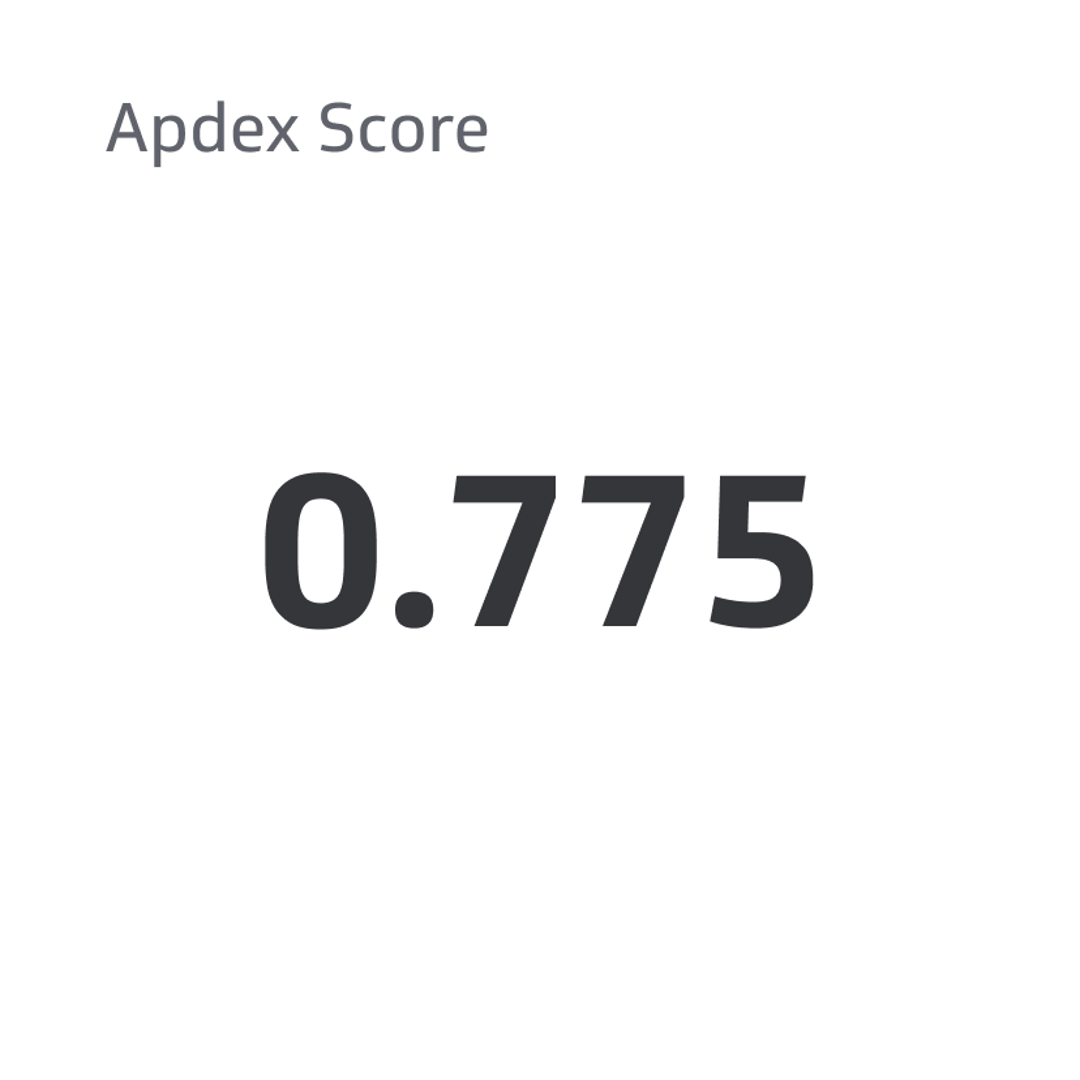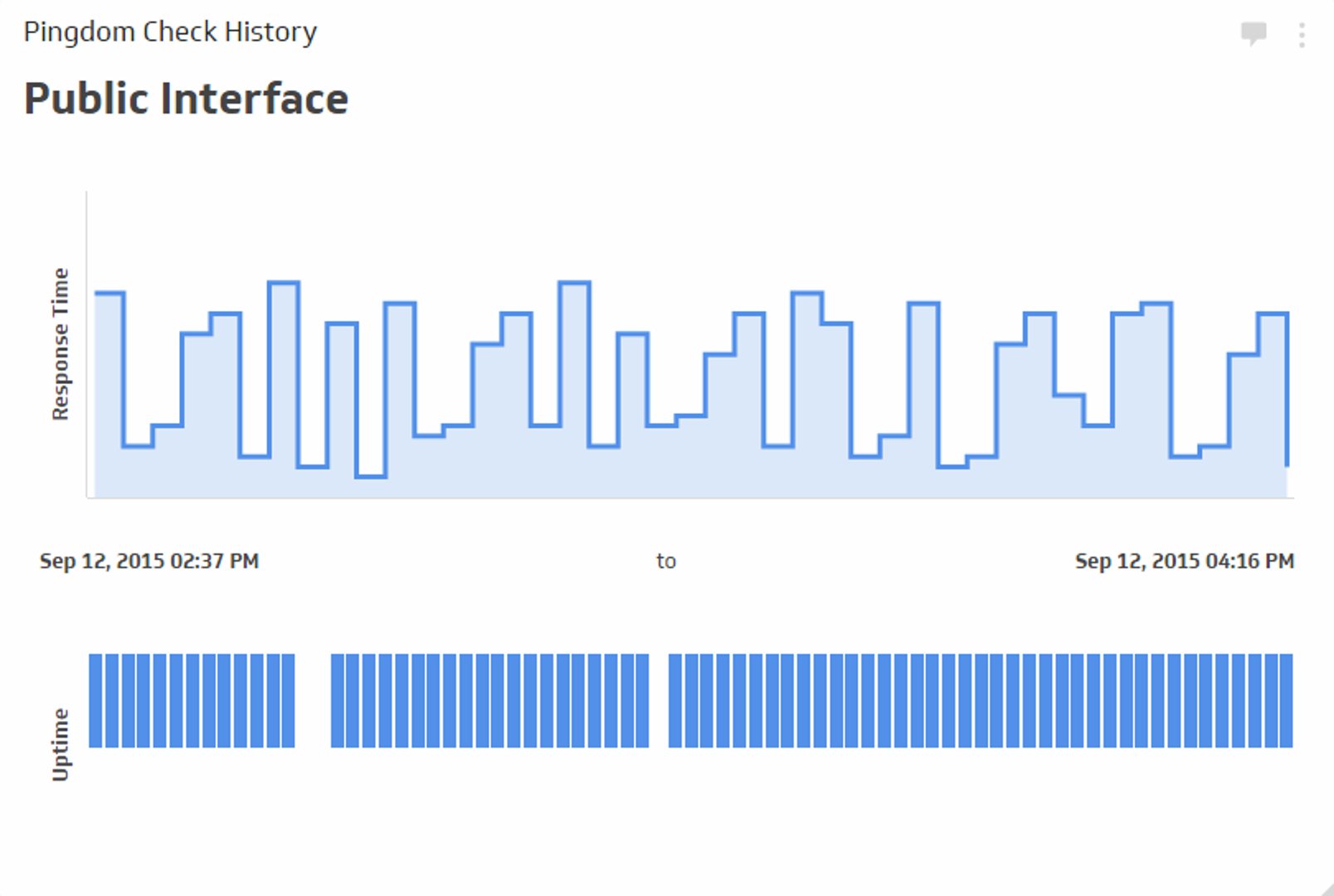Apdex Score
Apdex is short for Application Performance Index, a widely-accepted standard for evaluating overall user satisfaction with the speed of websites and web applications.
Track all your DevOps KPIs in one place
Sign up for free and start making decisions for your business with confidence.

In today's digital world, the speed of websites and apps is crucial for keeping users happy. The Apdex score is a useful measure of user satisfaction with this speed. By understanding and improving your Apdex score, you can make your website or app more attractive to users. Let's explore what Apdex is, how to calculate it, and why it matters for your business.
What Is an Apdex Score?
Apdex is short for Application Performance Index, a widely-accepted standard for evaluating overall user satisfaction with the speed of websites and web applications.
The important thing to remember here is that Apdex is specifically about speed, not any other aspects of the program. This matters because users have an increasingly low tolerance for slow sites and bad performance.
Back in 2016, more than half of all mobile users were already abandoning websites taking more than three seconds to load, and that number has gone up over time.
It’s interesting, then, that during a 2018 evaluation, Google also found that the average mobile site took over 15 seconds to load.
Desktop users are a little more tolerant, but the Apdex score matters regardless of what device visitors are arriving on. People who don’t even see your website will never convert into customers.
Apdex Score Elements
There are several formats for creating an Apdex score, but most companies use the standard format.
This version of an Apdex score has three components: Satisfied, Tolerating, and Frustrated. Each section is calculated by tracking the response time of the application for them, not through surveys or other checks.
From there, the company has to define each component. Most select response times of three seconds or less for Satisfied, but Tolerating can stretch and extend for as long as users are willing to accept it. The change to Frustrated comes at the point when a significant number of users quit using the application.
Also, all responses that produce a server or application error are automatically Frustrating.
Calculating Apdex
Calculating an Apdex score is simple.
The equation is all of the Satisfied scores, plus half of the Tolerating scores, divided by the total number of scores you’re checking.
Let’s say we have a sample of 1000 users. Of these, 750 are in the Satisfied range and another 150 are Tolerating. The remaining 100 users are Frustrated and have dropped the application.
The calculation here would be (750 + (150/2)) / 1000 = 0.825.
An Apdex calculation should always result in a number between 0 and 1. If you get a score outside this range, there was an error in calculating and you should recheck your numbers.
Apdex Score Ratings
Most companies use the following scoring format for Apdex:
- Excellent: 1.0 to 0.94
- Good: 0.93 to 0.85
- Fair: 0.84 to 0.70
- Poor: 0.69 to 0.49
- Bad: 0.48 to 0.0
Under this format, we can see that our sample calculation above would put an app into the Fair range, so there’s room for improvement.
A typical Apdex score is about 0.85, meaning it’s just on the bottom end of a Good score. As long as you’re at that point or higher, your software is doing well. It’s okay to seek further improvement, but don’t focus on reaching an arbitrarily high score without good reason.
Companies can usually tolerate even a Poor score, though that’s not ideal. Anything in the Bad range is completely unacceptable and needs to be fixed as soon as possible unless it’s due to temporary external causes.
Improving Apdex Scores
The best way to improve Apdex scores is to pinpoint any areas where slowdowns occur and find ways to resolve them. There are many potential causes of slowdowns in websites and applications.
For example, video-heavy sites may require several seconds to load and buffer the videos. You can alleviate this with a sufficiently powerful server system, but you can also improve loading times by shrinking video file sizes or quality. Some companies will send lower-quality videos to mobile devices than desktops.
You may also be able to fix slowdowns by improving software so it requires less network connectivity, or by allocating additional bandwidth per user.
The primary considerations here are how much impact a specific change will have and how easily you can do it. A tiny change that would be very expensive probably isn’t worth bothering with, but a high-impact change that’s somewhat costly could be worth it. The best changes are high-impact, low-cost ones if you’re lucky enough to find those.
The Limitations of Apdex
Apdex scores are useful, but they do have a few limitations to keep in mind.
First, they are not a good measure of a user’s overall experience with your software. It doesn’t matter how fast your app is if the app sucks. Instead, it’s better to think of the Apdex score as an indicator of opportunity. A responsive website or application might convert users, whereas a slow one won't. It’s a starting point, not an overall UX score.
Second, Apdex may not consider naturally-different content. Some things are inherently slower to load and no amount of server optimization can improve this past a certain point. It doesn’t make sense to grade something poorly if it’s inherently unable to improve.
Instead, you can look for other ways to occupy a user’s time while something loads. Many video games address this with a “tips” section on their loading screens, giving their user some sort of information or advice to focus on while the software loads.
Third, looking at the Apdex score for your entire site may lead to bias about its performance. Things that are consistently slow but rarely visited have little impact on your site’s overall performance. If the central parts of your site are always fast, it may be performing better than your Apdex suggests.
The critical thing to remember here is that you may not be able to solve slow load times that create a low Apdex, but you may be able to find ways around the problem if you’re creative. Don’t let calculating your Apdex lock you into a box when other solutions may work better.
Frequently Asked Questions
Here are some common questions people have about Apdex.
Which side do companies calculate Apdex on?
Most businesses calculate Apdex by tracking things on the server side of things. However, some specifically test things client-side to help measure network latency, which is also part of a typical user’s experience.
What causes a low Apdex score?
There are many potential causes for a low Apdex score. Website errors, lack of bandwidth, too many user requests, or unusually high traffic elsewhere on the internet can all contribute to a lower Apdex.
Since there’s no universal cause, the only practical course is checking your server logs or using Apdex monitoring software to pinpoint the causes of a low score.
What’s the difference between Apdex and User Experience Score?
Apdex is exclusively a rating of application performance measured by its speed. Faster is always better, to the realistic limits of technology.
User Experience Score is a measure of a user’s overall experience through the software, checking things like the number of errors or slowdowns they experience across their entire session.
Related Metrics & KPIs


